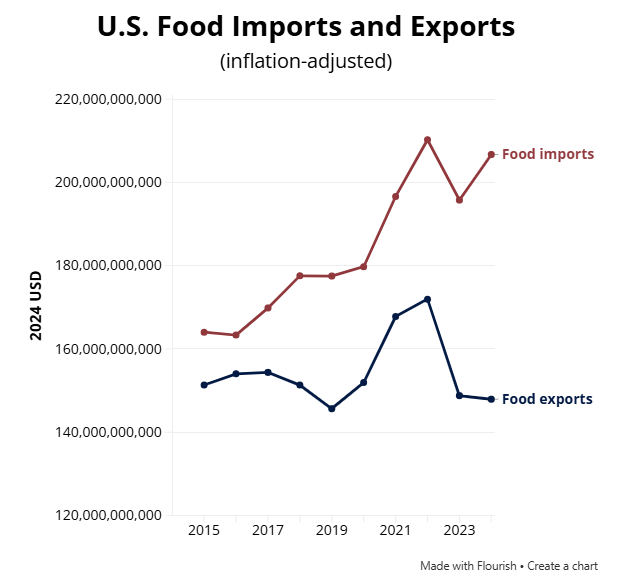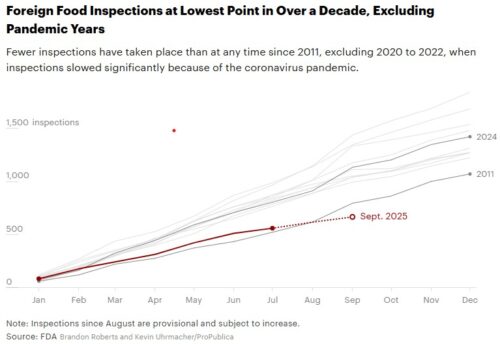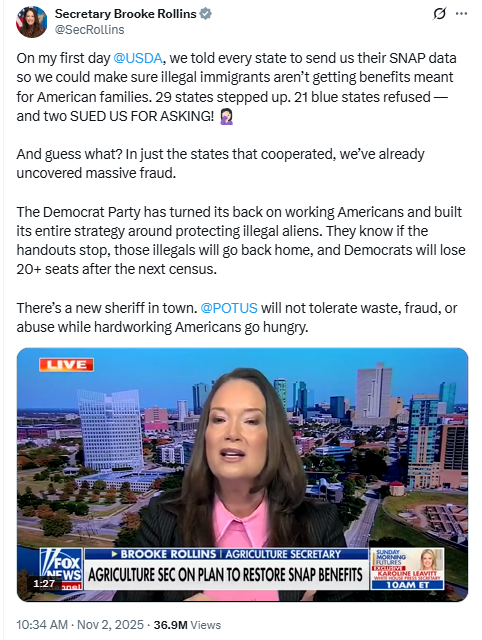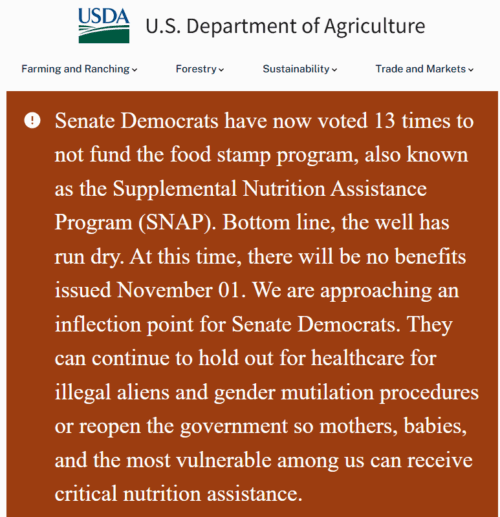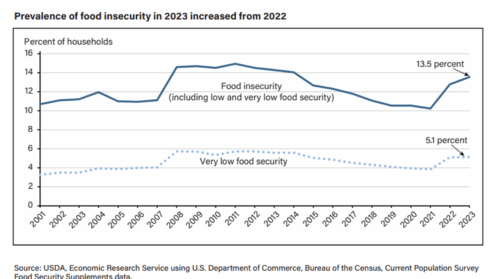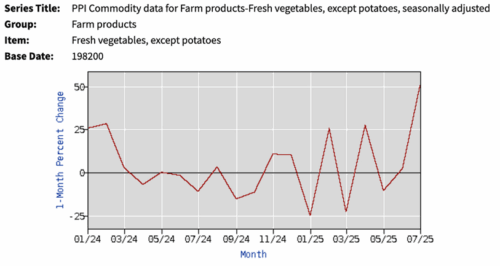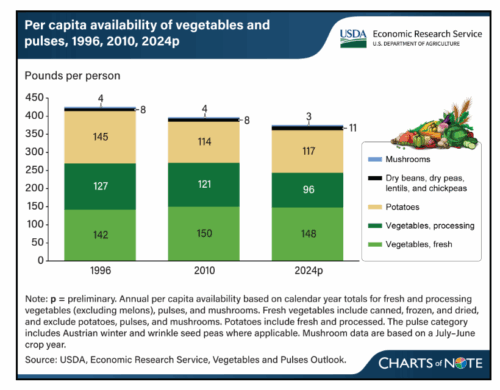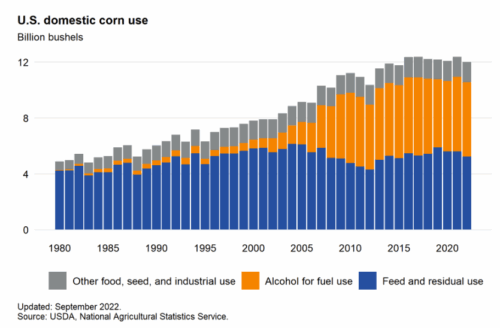The USDA requires retailers who accept SNAP benefits to stock a few fruits and vegetables. Formerly, USDA required retailers to provide three varieties of food in each of four categories—dairy, protein, grain, and fruits and vegetables. It allowed stores to meet these requirements by providing a few tired-looking produce items, such as the ones shown here from a Walgreen drugstore.
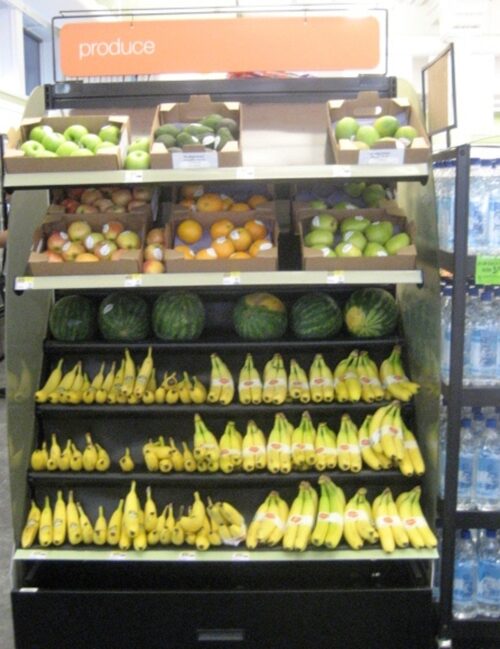
USDA proposes to expand the number from 3 to 7.
This is confusing. I thought the USDA did this in 2016: Enhancing Retailer Standards in the Supplemental Nutrition Assistance Program (SNAP) Clarification of Proposed Rule and Extension of Comment Period.
OK. Whatever. Let’s start with the press release, because I always enjoy USDA rhetoric: Secretary Rollins Strengthens SNAP Retailer Stocking Requirements to Make America Healthy Again.
Right now, the bar for stocking food as a SNAP retailer is far too low, allowing people to game the system and leaving vulnerable Americans without healthy food options. These common-sense changes are designed to minimize benefit trafficking and skimming, among other fraudulent activities, while making more nutritious foods available to families who rely on the program….USDA is actively reorienting SNAP towards better nutrition and emphasizing whole, healthy food for program participants. This includes approving 12 states to exclude certain unhealthy foods from purchase with SNAP benefits.
- Perishable meat, poultry, or fish, including fresh or frozen versions for each different kind of animal;
- Shelf-stable meat, poultry, or fish for each different kind of animal;
- Eggs;
- Nuts/seeds;
- Raw beans, peas, or lentils, each of which would count as a distinct protein variety;
- Cooked (e.g., canned) beans,
- Peas, or lentils and multi-ingredient products with beans, peas, or lentils as the main ingredient; and
- Tofu/tempeh, together, would be a distinct variety from all other types of proteins and any other pea product as the main ingredient.”
At first glance, this looks like a step in the right direction. It will require stores that accept SNAP benefits to offer a greater variety of healhy food options.
This is a no-brainer for Walmart or any other large grocery store. They already do this.
Therefore, this rule has to be understood as being aimed at bodegas as well as at Dollar stores located in areas where no other retail foods are readily available.
That is why this proposal is considered a ‘mixed bag’ for both retailers and shoppers.
Such stores, widely frequented by SNAP recipients whose payments are likely to constitute significant percentages of sales, will have a hard time meeting these requ. They already had trouble meeting the existing requirements.
This proposal does not seem to be accompanied by incentives to SNAP recipients to buy fruits and vegetables.
As detailed in an issue brief by Healthy Eating Research, The Current State of Knowledge on SNAP Restrictions and Disincentives, incentives would help. Otherwise, the rising cost of fruits and vegetables can seem prohibitive.
The proposal is open for comment—by November 24. Here’s how.
The Food and Nutrition Service (FNS), USDA, invites interested persons to submit comments on this proposed rule. Comments may be submitted by one of the following methods:
- Federal e-Rulemaking Portal: Go to regulations.gov. Preferred method; follow the online instructions for submitting comments on docket FNS-2025-0018 or enter “RIN 0584-AF12” and click the “Search” button. Follow the instructions at this website.
- Mail: Comments should be addressed to SNAP Retailer Policy Division, Food and Nutrition Service, USDA, 1320 Braddock Place, Alexandria, Virginia 22314.
